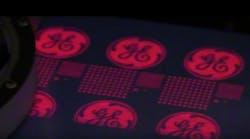The first draft of the Model Specification was posted for review in April and the revised specification takes into account feedback from the street-lighting consortium members and the wider community.
The Model Specification available at www.ssl.energy.gov/specification.html is designed specifically for LED lighting products, which can substantially reduce maintenance costs while improving roadway visibility. There are two guidelines available: the System Specification option for municipalities (Appendix A), which is designed to maximize application efficiency and incorporates site characteristics such as pole spacing and mounting height; and the Material Specification option for utilities (Appendix B), which emphasizes luminaire efficiency and does not consider site characteristics.
The flexible format of the guideline allows users to modify default values to fit their local design criteria, which typically vary from city to city, and even from application to application within a given city.
“Converting our nation’s streetlights to LED technology could make a substantial dent in our energy consumption while also improving quality of illumination – but only if the right choices are made,” said Consortium Director Edward Smalley of Seattle City Light. “The new specification will help cities, utilities, and others make better choices.”
The DOE created the Consortium last year to inform and harmonize the efforts of the many cities that are evaluating LED street lighting products, often spurred on by block grants and energy mandates. The model specification was developed by consortium members, with feedback from a manufacturers’ working group that included Acuity Brands, BetaLED/Ruud Lighting, Cooper, GE Lighting Solutions, Hubbell, LED Roadway Lighting, Leotek, Lighting Science Group, Osram Sylvania, Philips Hadco, Philips Lumileds, and Philips Roadway Lighting. This input is designed to ensure that RFPs based on the specification will result in submissions from multiple manufacturers.
The specification is a “living document” that will be adapted as needed. To learn more about the consortium, visit www.ssl.energy.gov/specification.html.




